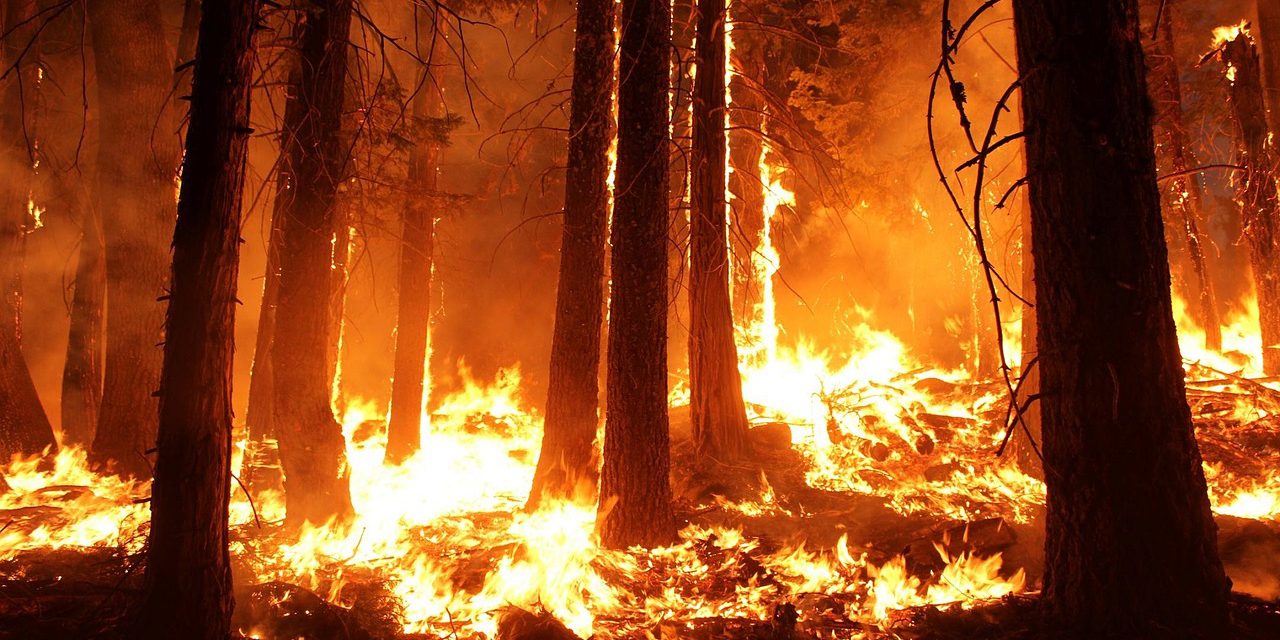The once idyllic city of Paradise, California still faces a long and difficult recovery nearly one year after 2018’s tragic Camp Fire. The deadliest and most destructive wildfire on the books in the state, the Camp Fire claimed 85 lives and caused over $16 billion in losses.
Making matters worse for survivors, about a quarter of these losses were uninsured, leaving many victims of the conflagration to start over from scratch. But even those not directly impacted by the fire are shouldering its economic consequences as its effects ripple across the state. With California’s 2019 fire season heating up, insurers are pulling policies from homeonwers in high-risk fire zones.
Thanks to the state’s recent record-breaking fire seasons, homeowners in high-risk fire zones may find themselves unprepared to insure or even sell their homes.
Drop it like it’s hot
Homeowners in high-risk fire zones are suffering sticker shock after seeing their insurance premiums double — and even triple in some cases — after worsening fire seasons. Insurers are hiking premiums and dropping policies to mitigate the increased risk of fire loss claims.
Editor’s note — Check this interactive map to learn if your California property is located in a high-risk fire zone.
This isn’t just a knee-jerk reaction. 2018’s Camp Fire claimed Merced Property & Casualty, a small Merced insurance company that collapsed under the weight of millions in claims for properties in Paradise. It was declared insolvent and seized by a California court in December 2018.
Insurers continue to tighten their belts in preparation for an especially active fire season in 2019. In lieu of rate hikes, an increasing number of homeowners have instead received the dreaded nonrenewal notice from their home’s insurer. This notice informs homeowners that their insurance provider has opted not to renew their insurance policy, leaving some to search for a new insurer year after year.
While data on insurer nonrenewals is limited, a few clues suggest this crisis is boiling over. The California Department of Insurance has received 451 complaints about cancellations and premiums from customers in high-risk fire zones in 2018, according to the Sacramento Bee. This is up from 95 in 2010. Further, the Department reports insurer nonrenewals grew 10% in high-risk zip codes between 2016 and 2018.
This trend puts homeowners in a difficult situation. Those without a mortgage may choose to risk everything by forgoing coverage, but those carrying a mortgage don’t even have that option. Lenders typically require homeowners insurance on mortgages.
Will home sales go up in smoke?
But therein lies the rub. Homes with ballooning insurance costs are not an attractive sell. Insurance costs can surprise buyers, upending their debt-to-income ratio and making an otherwise conservative transaction unworkable.
When this occurs en masse across communities in fire zones, it can snuff out the entire local economy. Homeowners can’t afford to stay because of burgeoning insurance premiums and can’t move to an area safer from wildfires without taking a bath on their home sale.
Homeowners lucky enough to have a home after a disastrous firestorm like that which swept through Paradise go on to see property values tank, taking with it their prospects of selling at its previous fair market value. Reconstruction is a lengthy process, and homeowners may not be able to wait for their community to rebuild from nothing.
Editor’s note — Visit the Butte County Assessor website for a helpful FAQ on home property values relating to the 2018 Camp Fire.
It doesn’t help that California’s home sales volume is weak to begin with. In August 2019, the number of homes sold was 2.6% lower than a year earlier, continuing a long trend of falling year-over-year sales volume that began in the second half of 2018.
Homeowner action plan
Complicating an already sluggish housing market with an unraveling environmental crisis is a recipe for an economic firestorm. In response, homeowners and lawmakers are drawing up their fire safety action plans by mounting stronger physical and financial precautionary measures.
First things first, homeowners in high-risk fire zones need to secure homeowners insurance. While homeowners insurance is not a legal requirement to homeownership, it is strongly recommended that homeowners protect what is in most cases their most valuable asset from disaster.
Homeowners who otherwise cannot secure an insurance policy have a last resort in California’s Fair Access to Insurance Requirements (FAIR) Plan. The FAIR Plan is a state-mandated program that provides access to insurance for individuals having trouble insuring their high-risk property.
Thanks to increasing insurer nonrenewals, new FAIR Plan enrollments grew 177% between 2015 and 2018 in the ten California counties with the most homes in high-risk areas. While the FAIR Plan excels at guaranteeing basic coverage for otherwise uninsurable homes, it’s no remedy for sticker shock; FAIR Plan rates are often higher than those of traditional insurers since they take on increased risk.
California legislators are also stepping in to protect homeowners in high-risk areas. Governor Gavin Newsom signed 22 wildfire-related bills in October 2019. Of note to real estate professionals serving fire-prone areas is Assembly Bill 38 (AB 38). The bill creates a $1 billion fund for no- and low-interest loans for homeowners to replace or install fire-resistant systems or create defensible space around their property. Read the bill text here.
With the 2019 fire season gearing up, real estate professionals need to be prepared to quell homeowner fears about living in high-risk fire zones. Aside from securing the proper homeowners insurance, agents can also suggest improvements that will harden a home against fire, like upgrading to dual-paned windows and creating natural fire buffers through landscaping.
Agents — stay on top home fire safety standards for your clients in high-risk areas. Click through for more recommendations on hardening a home for the 2019 fire season.
Related article: https://journal.firsttuesday.us/half-a-million-california-homes-at-high-wildfire-risk/69269/














